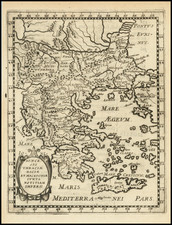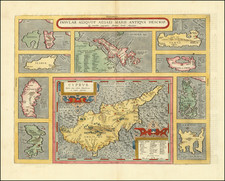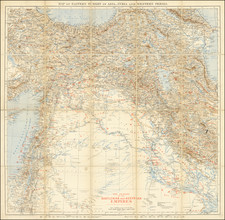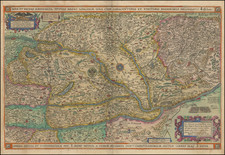Detailed depiction of the Roman era regions of "Illyricum, Dacia, Moesia, Macedonia et Thracia" of ancient Southeast Europe, each with its own distinct cultural and historical identity:
-
Illyricum: Stretching along the eastern coast of the Adriatic Sea, Illyricum was a region known for its diverse tribes. It played a crucial role in the Roman military and political strategies, serving as a crucial link between the western and eastern parts of the empire.
-
Dacia: Located beyond the northern bounds of the Roman Empire, in what is now Romania and Moldova, Dacia was renowned for its gold mines. It became a Roman province after two major wars in the early 2nd century AD, highlighting the extension of Roman influence into Eastern Europe.
-
Moesia: Divided into Moesia Superior and Moesia Inferior, this region spanned parts of modern Serbia, Bulgaria, and Romania. It was important for its strategic position along the Danube River, serving as a defensive frontier for the Roman Empire against northern incursions.
-
Macedonia: Historically significant as the kingdom of Alexander the Great, by the Roman period Macedonia was a province covering parts of northern Greece, Albania, and North Macedonia. It was a vital corridor for Roman military campaigns into the eastern territories.
-
Thracia (Thrace): Encompassing modern-day Bulgaria, northeastern Greece, and European Turkey, Thrace was known for its fierce warriors and was crucial for controlling the land route from Europe to Asia. It became a Roman province in the 1st century AD.
The Arrowsmiths were a cartographic dynasty which operated from the late-eighteenth century to the mid-nineteenth. The family business was founded by Aaron Arrowsmith (1750-1823), who was renowned for carefully prepared and meticulously updated maps, globes, and charts. He created many maps that covered multiple sheets and which were massive in total size. His spare yet exacting style was recognized around the world and mapmakers from other countries, especially the young country of the United States, sought his maps and charts as exemplars for their own work.
Aaron Arrowsmith was born in County Durham in 1750. He came to London for work around 1770, where he found employment as a surveyor for the city’s mapmakers. By 1790, he had set up his own shop which specialized in general charts. Arrowsmith had five premises in his career, most of which were located on or near Soho Square, a neighborhood the led him to rub shoulders with the likes of Joseph Banks, the naturalist, and Matthew Flinders, the hydrographer.
Through his business ties and employment at the Hydrographic Office, Arrowsmith made other important relationships with Alexander Dalrymple, the Hudson’s Bay Company, and others entities. In 1810 he became Hydrographer to the Prince of Wales and, in 1820, Hydrographer to the King.
Aaron Arrowsmith died in 1823, whereby the business and title of Hydrographer to the King passed to his sons, Aaron and Samuel, and, later, his nephew, John. Aaron Jr. (1802-1854) was a founder member of the Royal Geographical Society (RGS) and left the family business in 1832; instead, he enrolled at Oxford to study to become a minister. Samuel (1805-1839) joined Aaron as a partner in the business and they traded together until Aaron left for the ministry. Samuel died at age 34 in 1839; his brother presided over his funeral. The remaining stock and copper plates were bought at auction by John Arrowsmith, their cousin.
John (1790-1873) operated his own independent business after his uncle, Aaron Arrowsmith Sr., died. After 1839, John moved into the Soho premises of his uncle and cousins. John enjoyed considerable recognition in the geography and exploration community. Like Aaron Jr., John was a founder member of the RGS and would serve as its unofficial cartographer for 43 years. Several geographical features in Australia and Canada are named after him. He carried the title Hydrographer to Queen Victoria. He died in 1873 and the majority of his stock was eventually bought by Edward Stanford, who co-founded Stanford’s map shop, which is still open in Covent Garden, London today.











![[Composite Lafreri-style Atlas of Battle Plans and Fortifications]](https://storage.googleapis.com/raremaps/img/small/92702.jpg)


![Natolia quae olim Asia Minor [Includes Cyprus]](https://storage.googleapis.com/raremaps/img/small/63981op.jpg)